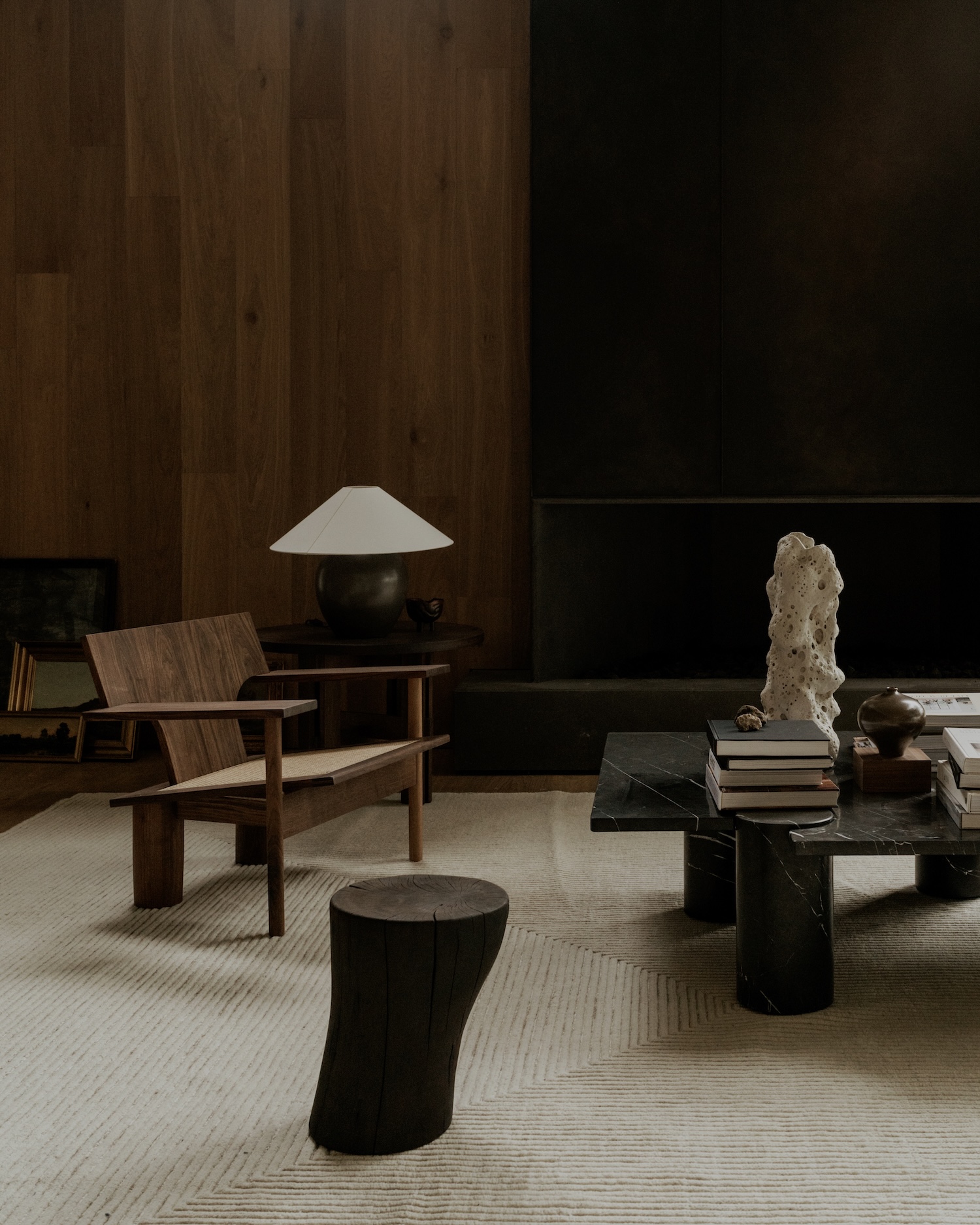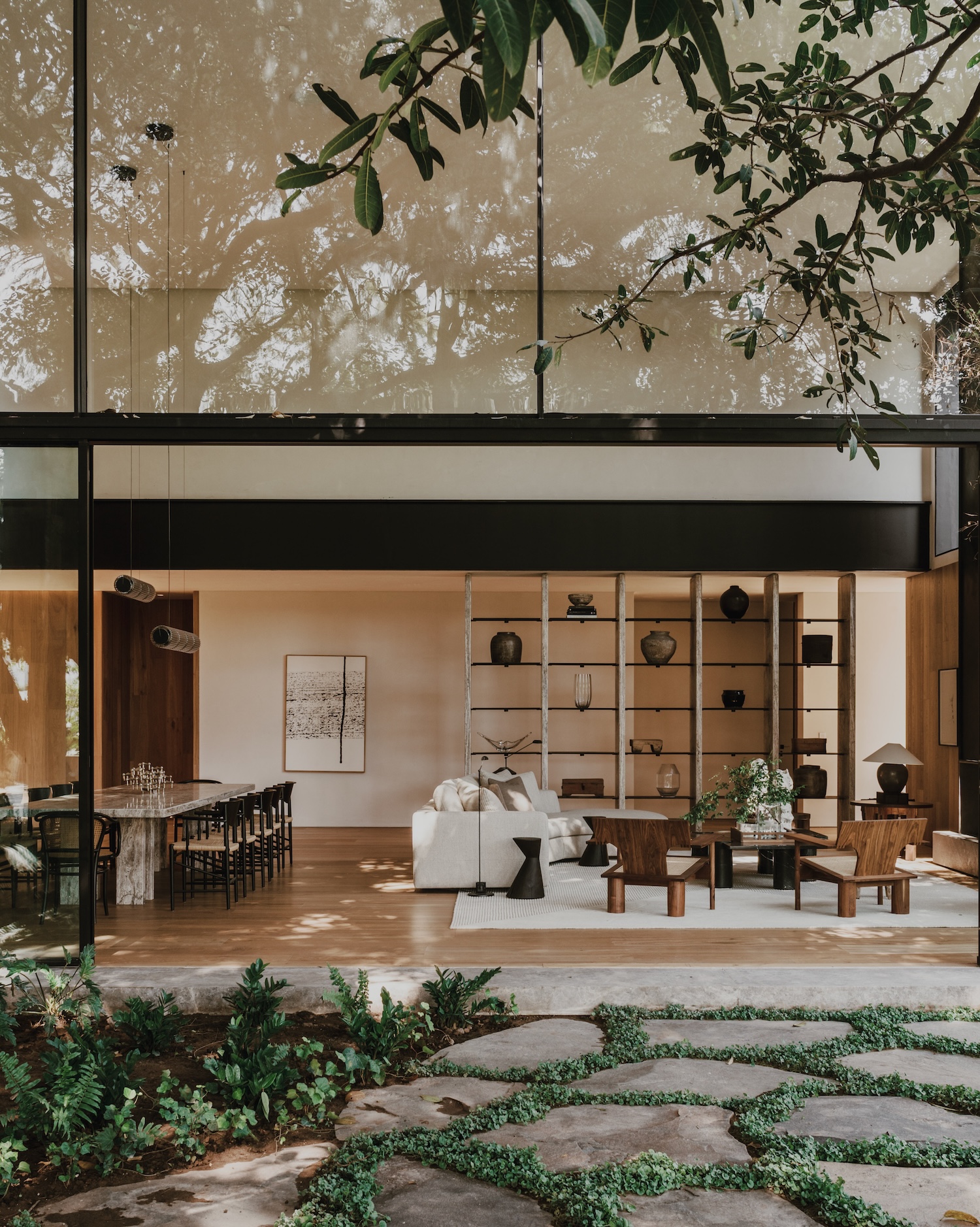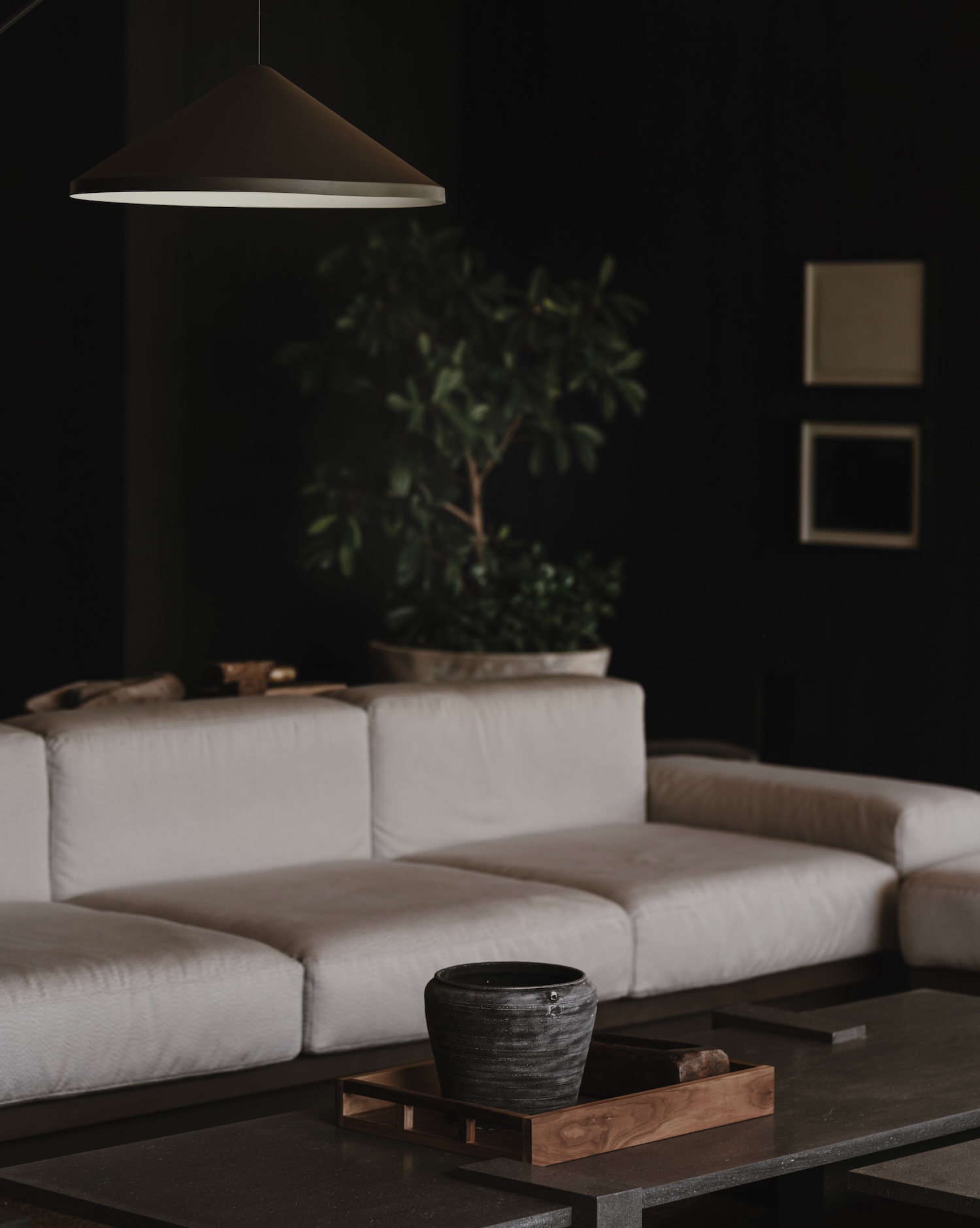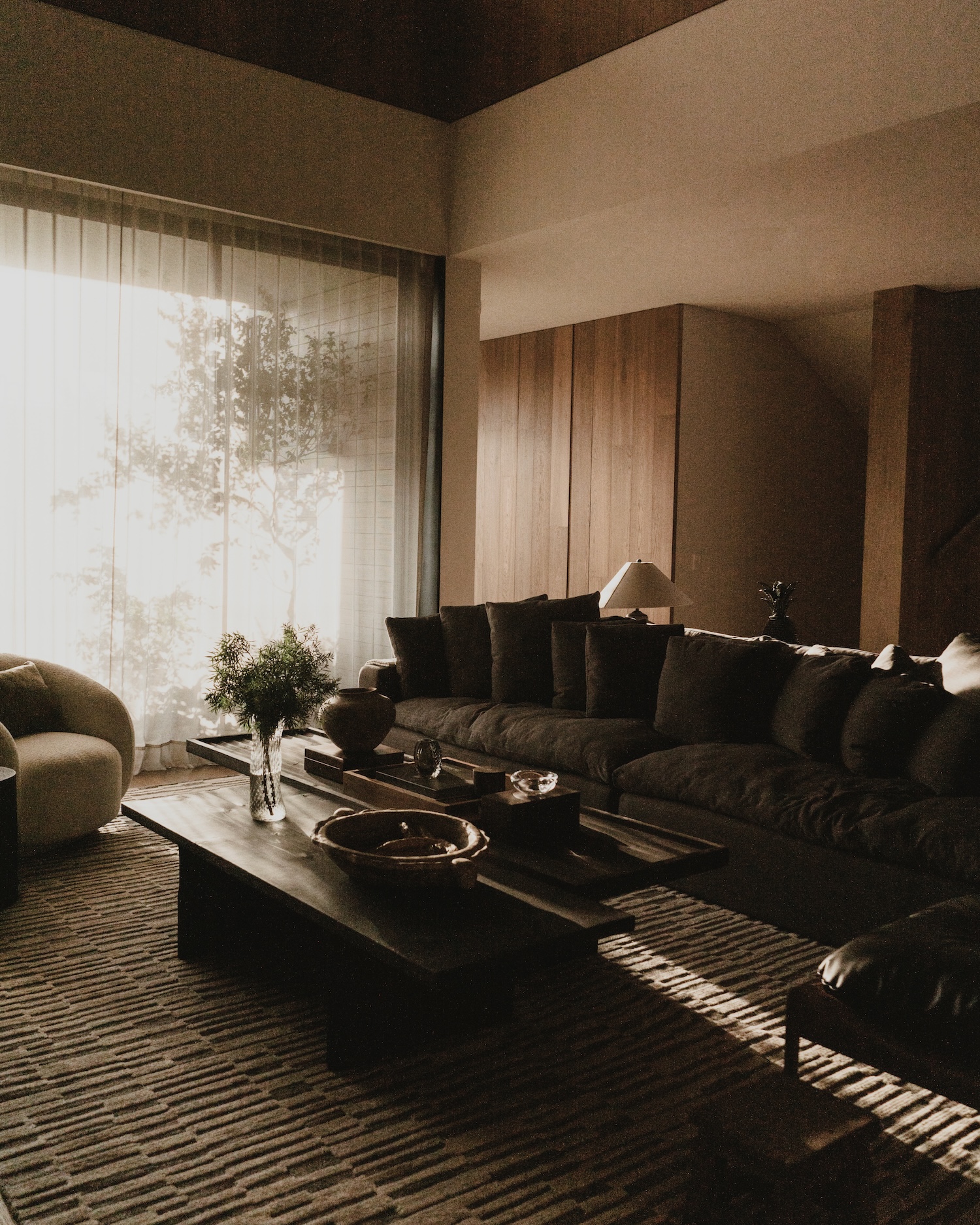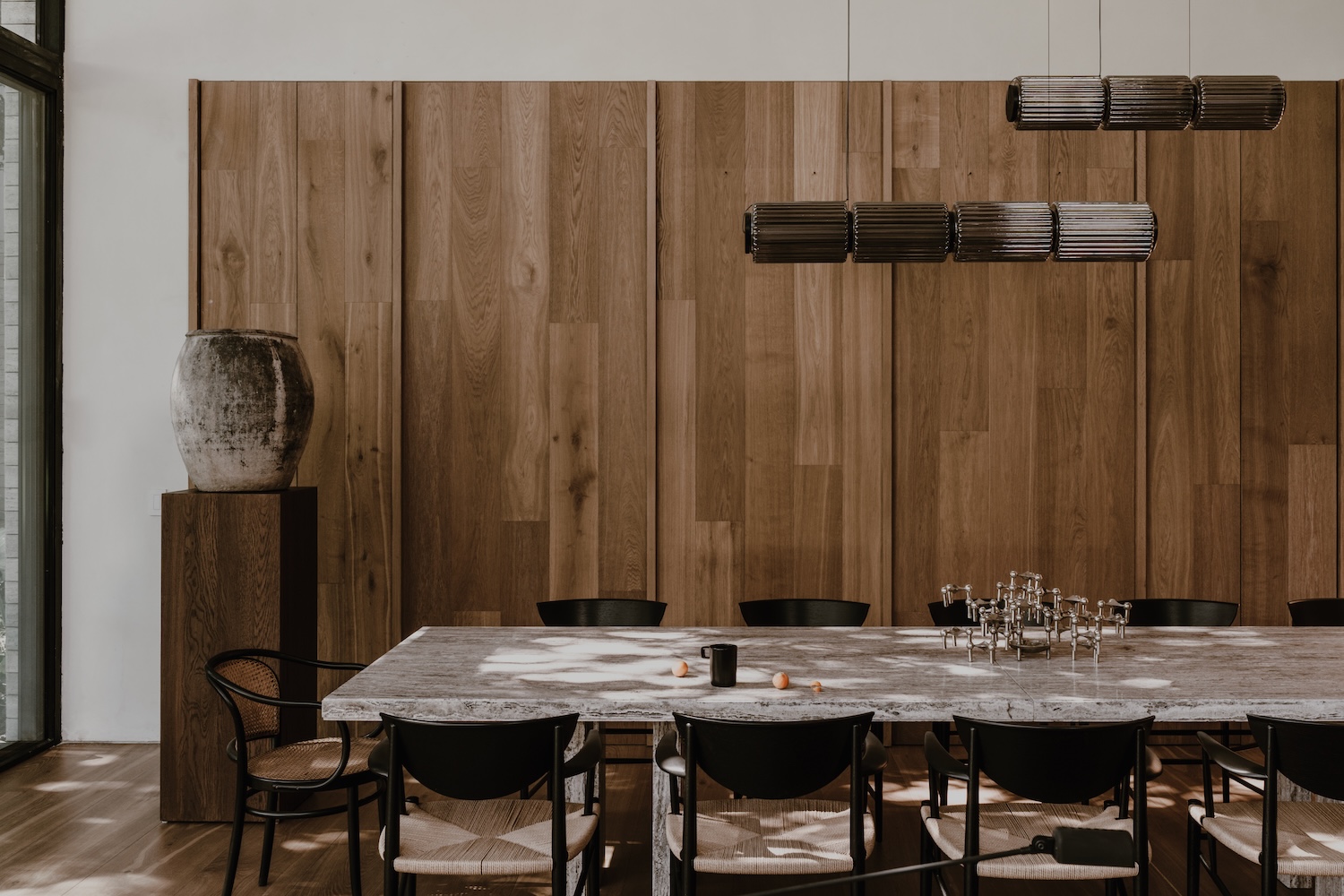Casa Co is a minimal house located in Guadalajara, Mexico, designed by Aagnes. The studio’s approach reveals itself most powerfully in their treatment of materiality as narrative device. The dark shou sugi ban cladding, that ancient Japanese technique of charring cedar, stands in deliberate conversation with the warm travertine and noble woods – a material dialogue that speaks to Aagnes’ philosophy of bridging traditional craft with contemporary sensibility. This is not mere eclecticism but careful curation, where each surface carries both tactile and cultural weight.
In the double-height living area, glass and steel dissolve conventional boundaries between interior and exterior, creating what the designers describe as “a pause” – that liminal threshold where noise yields to silence. The metaphor is architectural and philosophical simultaneously. Here, the sofa becomes more than seating; it anchors a space designed for introspective pause, surrounded by the interplay of filtered light and shadow that defines the home’s essential character.
The pool functions as both mirror and meditation, reflecting not just sky and vegetation but the house’s deeper purpose as a vessel for contemplation. Water has long served this role in Mexican architecture, from pre-Columbian ceremonial pools to Luis Barragán’s modernist interpretations. Aagnes continues this lineage while adding their own vocabulary of stillness and reflection.
As afternoon progresses, the home’s darker tones emerge to frame what the designers call “a softer, enveloping light.” The family area invites tranquility through textiles in sandy, neutral tones – a palette that echoes the regional landscape while speaking to contemporary desires for sanctuary. The bedrooms transform into “intimate sanctuaries,” where sunset filtering through curtains creates what might be understood as domestic theater, each room staging its own version of day’s end.
The material palette tells its own story of place and time. Tundra grey marble floors ground the spaces in geological permanence, while wood elements serve as “leitmotiv throughout the project” – recurring themes that bind the composition together. This is craft thinking applied to architecture, where repetition and variation create rhythm and coherence. The house ultimately functions as instrument for what Aagnes calls “reflexive contemplation” – architecture that slows down time rather than accelerating it. In our era of digital immediacy and urban density, such spaces offer necessary counterpoint. They propose that dwelling can be both contemporary and contemplative, that luxury might be found not in excess but in the careful calibration of light, material, and silence.



